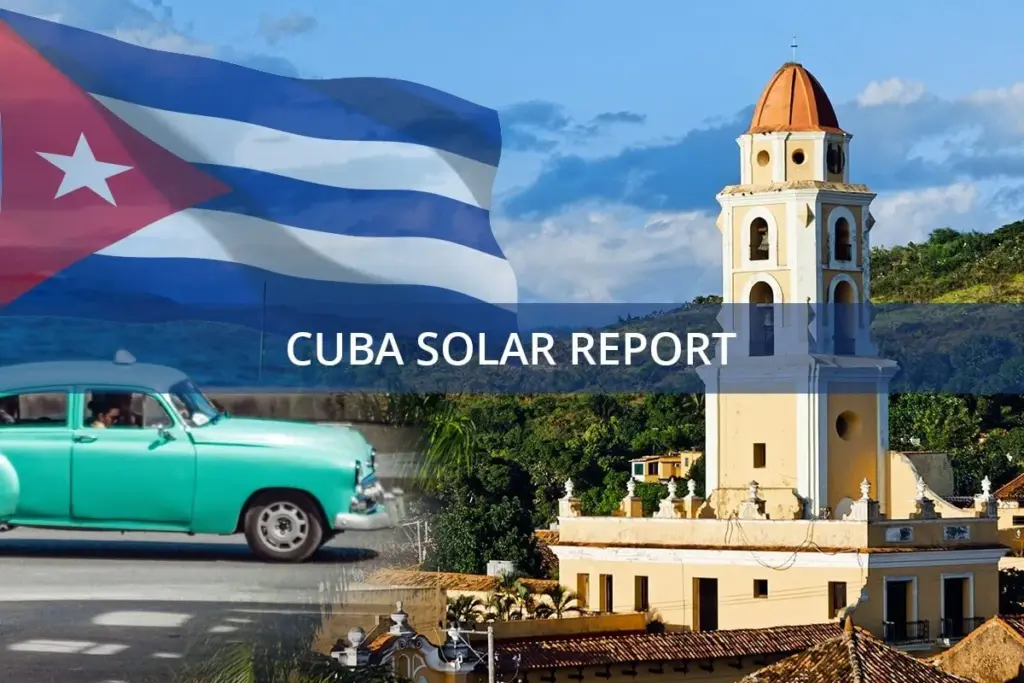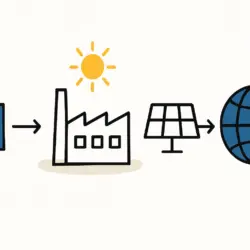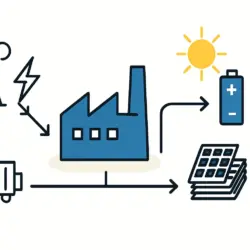Cuba is significantly expanding its solar energy capacity in a race against time, yet the country is projected to fall drastically short of its energy needs, facing a potential grid collapse by 2025. Despite ambitious plans, the scale of the island’s structural energy crisis—fueled by aging infrastructure and fuel shortages—means that even a significant Cuba solar energy boost for the grid in 2025 may not be enough to avert widespread blackouts. Projections show a staggering generation gap of nearly 1,830 MW, casting a shadow over the goal of energy stability.
Current Cuba solar energy Capacity and Growth
Cuba’s current installed solar energy capacity stands at 312 MW, benefiting from an average daily solar radiation of 5.5 kWh per square meter. However, an estimated 50 MW of this capacity is not operational, hindering its contribution. While the country saw a 47% increase in solar capacity in 2022, this growth started from a very low base; solar accounted for only about 1.5% of the nation’s electricity that year. The government is pushing forward with the construction of new solar parks, including 32 new facilities expected to add 583 MW. Yet, even if the target of 700 MW is reached by 2025, it is projected to cover only 4.8% of Cuba’s total energy needs.
To bridge this gap, the government recognizes the urgent need for capital. Minister of Energy and Mines, Vicente de la O Levy, stated that achieving the more realistic 2030 target of 25% renewable energy will require an additional two billion dollars in investment. To attract this, Cuba is seeking international partnerships, including learning from Vietnam’s successful household solar power programs.
Legislative efforts like the proposed Law on Renewable Energy Sources and Energy Efficiency, along with a 2017 law permitting private solar panel ownership, aim to create a more favorable environment. These policies are designed to integrate more renewables into the national grid, but their success hinges on implementation and the availability of capital to fund both large-scale projects and residential installations.
Challenges and Opportunities for Cuba solar energy
Cuba’s energy matrix remains heavily dependent on fossil fuels, which accounted for 87% of the energy mix in 2021. This reliance is at the heart of the current situation, where the Cuba energy crisis makes the solar expansion critical. The country is on the brink of collapse, with recent figures showing generation availability at just 1,420 MW against a demand of 2,680 MW. The problem is compounded by fuel shortages that have forced 66 distributed generation plants offline, removing another 556 MW from the grid.
A major hurdle is the island’s outdated electricity infrastructure. The essential 2024 expansion of Cuba’s solar energy is hampered by thermoelectric plants that are, on average, 37 years old and prone to breakdowns. Decades of underinvestment and mismanagement have created a structural crisis that solar power alone cannot quickly resolve. Understanding the complexities of building a domestic supply chain, from sourcing solar panel raw materials to the full solar panel manufacturing process, highlights the immense challenge ahead.
Acknowledging these realities, the government has conceded that the 2025 renewable energy targets will not be met. Deputy Minister of Energy and Mines, Belarmino Fernández, confirmed that the focus has shifted to the more attainable 2030 goals.
Cuba’s Solar Expansion: A Step Towards Cuba solar energy Independence
Cuba’s solar energy expansion is less of a gradual step and more of a critical lifeline in its fight for energy independence. While the country has made progress, reaching milestones like the 130 MW of solar capacity achieved in early 2025, the pace is insufficient to overcome the deep-seated energy deficit. The government’s 15-year plan to push renewables to 37% of the generation matrix is ambitious but necessary to reduce fossil fuel imports and stabilize the grid.
The path forward requires a multi-faceted approach. Beyond simply installing panels, Cuba must secure massive investment, modernize its grid, and streamline the implementation of its renewable energy laws. Building a sustainable energy future will depend on understanding the fundamental basics of solar panel manufacturing and analyzing the complete plant cost breakdown to attract foreign partners.
While the 2025 goals seem out of reach, the determined push for solar energy remains the cornerstone of Cuba’s strategy for a more resilient and sustainable future.
To learn more about the technologies and processes that can power a clean energy transition, explore our free e-course on solar panel manufacturing.



